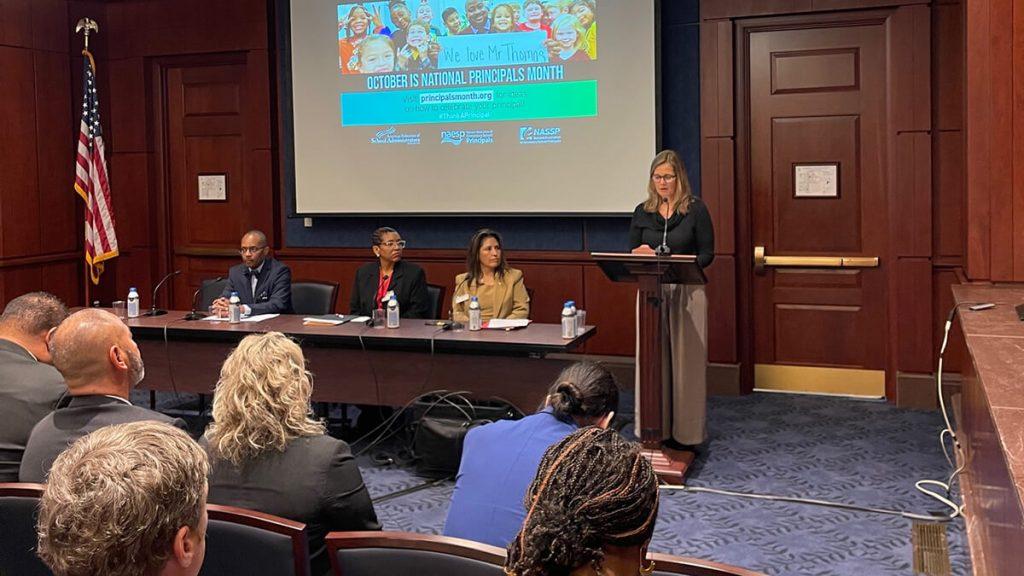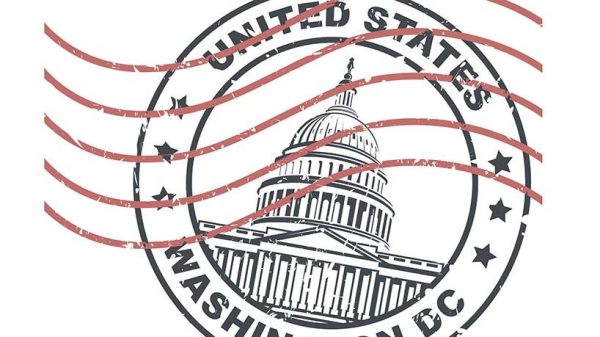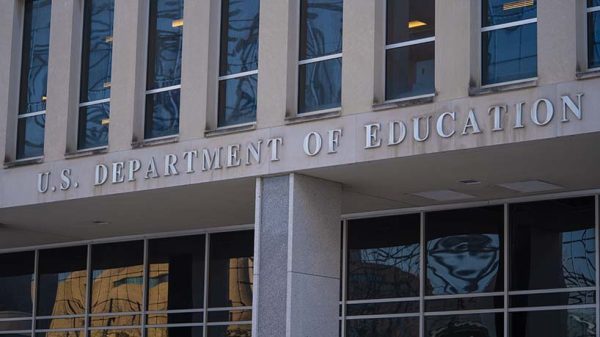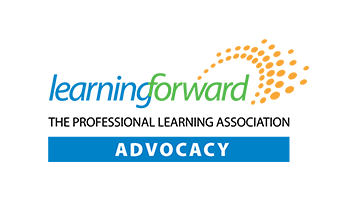October is National Principals Month, and Learning Forward is thrilled to recognize how important principals are for students and communities. Research tells us that effective principals have a sizable impact on student achievement through instructional leadership, school climate, staff support, family engagement, and other pathways. Those improvements in achievement ultimately result in returns to communities and society as a whole.
But principals also play vital roles outside their own schools, at the levels of state and federal policy. Principals are knowledgeable, trustworthy experts on the ground, who know what schools need in order for students to thrive. Their voices carry real weight.
Now is an especially important time for all of us to listen to the voices of principals, with national education funding at risk in 2024. Over the summer, the House Appropriations Subcommittee on Labor, Health and Human Services, and Education proposed deep cuts to many federal education programs that are cause for grave concern for everyone in the U.S. – whether they currently have a child in school or not.
The proposed cuts include:
- Title I: 80% cut to funding
- Title II-A: Full elimination
- Title III: Full elimination
- 28% cut to education funding overall
Title I provides financial support to schools that support America’s most disadvantaged students, who tend to start school without many of the material advantages that boost school success. An 80% cut to Title I would mean that approximately $4 billion would flow to schools and districts rather than $19 billion.
The proposed full elimination of Title II-A, the Supporting Effective Instruction State Grants program, would mean that there would be no federal funding provided for preparing, training, and recruiting high-quality teachers, principals, and other school leaders. Last year, Title II-A received $2.19 billion. Eliminating the program would mean schools lose money they have been counting on to cope with teacher shortages and help teachers support students’ needs as they continue to recover from the pandemic. Fortunately, the Senate doesn’t agree with these cuts and is prepared to provide the same funding for next year as last year. But it’s not a done deal, and we need to keep making the case for these funds.
Title III, the English Language Acquisition Formula Grant Program, is in the same place as Title II. This program was established to improve academic instruction for English Learners — a rapidly growing population in the United States before the recent immigration from the nation’s southern borders exploded. An $890 million program in fiscal year 2023, the Senate would provide it a small $7 million increase in fiscal year 2024 while the House would zero it out.
And principals are sounding the alarm. Principals know that these cuts would be disastrous. Principals are tasked with personnel and resource allocation at the school level, helping to ensure the educators with whom they work receive high-quality professional learning to be at their best for students, and dealing with the fallout of teacher shortages and underprepared staff. They are also the ones who are constantly looking at student data and into students’ faces, seeing how our society’s investments pay off – or how lack of investments cause harm.
Last week I led a discussion with three current and former principals participating in a National Principals Month policy briefing on Capitol Hill to get their perspectives on what Title I, Title II-A, and Title III programs have meant to their work and what it would look like if we no longer had federal funding for these programs.
These leaders were unequivocal about the positive impact of these programs on their students and the devastating impacts their schools and students would experience if program funding is gutted. Efforts to recruit, hire, and retain effective educators will falter, they said. Student learning acceleration will stall, they warned. And all of these impacts would hit students from families with the fewest resources the hardest.
Kevin Armstrong is a 27-year educator and principal of DuPont Hadley Middle School in Old Hickory, Tennessee, who recently began a one-year term as president-elect of National Association of Elementary School Principals. Armstrong said the Title II-A funds his school receives allows it to offer year-round professional learning, including a literacy coach and a math coach – and those investments are making a measurable impact. From Title II-A funds, “we have definitely seen an increase in achievement” he said, adding that these are gains they did not see “two to three years ago.” He said that “preliminary data shows that we have at least a 5% increase in our ELA data, and possibly as high as an 8% increase in math” in 2022-23.
At Learning Forward, our federal advocacy focus is Title II-A, which supports professional learning for approximately 2 million K-12 teachers and also allows states to set aside upwards of 3% of funds received to conduct specialized professional learning for principals and school leaders.
The U.S. Department of Education just released a report on how states and school districts used their Title II-A funds in the 2021-22 school year. The vast majority of these funds flow to teachers, but principals and school leaders do receive a significant share of these dollars. One major finding in the report: 75% of districts reported using the funds for professional development for teachers, and 56% of districts reported funding professional development for principals and other school leaders. On average, school districts expended 18% of their Title II allocations on principals and other school leaders.
The vast majority of activities were types of professional development, including tailoring professional development to individual teacher or leader needs (81%) and induction or mentoring programs for new teachers and leaders (70%). It’s important to note that these are sustained, long-term, high-quality forms of professional development. This August 2022 article from The Learning Professional describes why new teacher mentoring is essential and this article and this infographic illustrate the impact.
On the optional 3% state set aside, the report finds that 25 states reserved these funds to support school leaders, and 19 states reserved the maximum allowable.
I recommend all school, state, and district leaders dig into this report to get a full picture of state and district spending on Title II-A. We need to be armed with facts and ready to tell compelling stories of impact, such as the one Kevin Armstrong tells about improvements at DuPont Hadley Middle School.
Learning Forward is collecting Title II-A stories in districts around the country. We would love to meet with you at our upcoming 2023 Annual Conference, Dec. 3-6, to learn about your use of Title II-A funding and to help you craft your impact story. If you or others in your district would be interested, please sign up here. We look forward to meeting with you and helping your voice be heard!
At Learning Forward, we stand with principals in calling for Congress to fully fund the programs that make a difference for student achievement. As we celebrate principals and thank them for all they do, we urge Congress and all Americans to support them by providing the funding principals and other educators rely on to ensure that every child succeeds.









